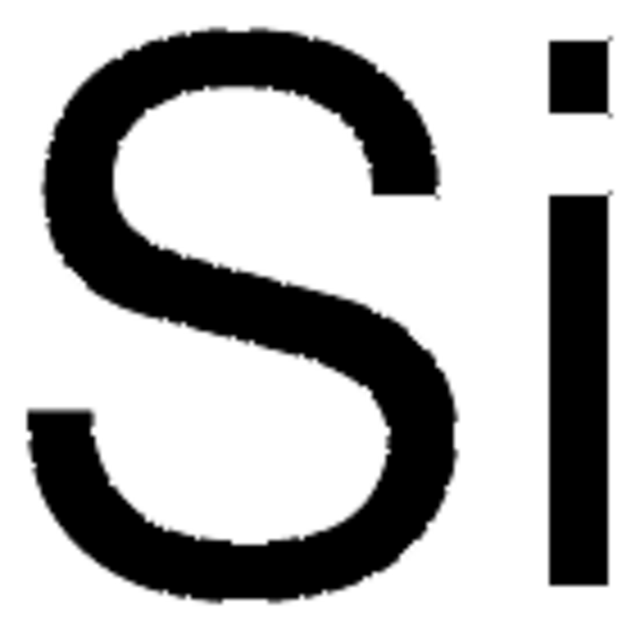Wichtige Dokumente
647543
Silizium
wafer (single side polished), <111>, N-type, contains no dopant, diam. × thickness 3 in. × 0.5 mm
Synonym(e):
Silicon element
About This Item
Empfohlene Produkte
Form
crystalline (cubic (a = 5.4037))
wafer (single side polished)
Qualitätsniveau
Enthält nicht
dopant
Durchm. × Dicke
3 in. × 0.5 mm
bp
2355 °C (lit.)
mp (Schmelzpunkt)
1410 °C (lit.)
Dichte
2.33 g/mL at 25 °C (lit.)
Halbleitereigenschaften
<111>, N-type
SMILES String
[Si]
InChI
1S/Si
InChIKey
XUIMIQQOPSSXEZ-UHFFFAOYSA-N
Suchen Sie nach ähnlichen Produkten? Aufrufen Leitfaden zum Produktvergleich
Physikalische Eigenschaften
Lagerklassenschlüssel
13 - Non Combustible Solids
WGK
WGK 3
Flammpunkt (°F)
Not applicable
Flammpunkt (°C)
Not applicable
Persönliche Schutzausrüstung
Eyeshields, Gloves, type N95 (US)
Hier finden Sie alle aktuellen Versionen:
Besitzen Sie dieses Produkt bereits?
In der Dokumentenbibliothek finden Sie die Dokumentation zu den Produkten, die Sie kürzlich erworben haben.
Kunden haben sich ebenfalls angesehen
Artikel
This article briefly reviews the methods and mechanisms for the formation of molecular monolayers on silicon surfaces, the properties of these monolayers and current perspectives regarding their application in molecular electronic and sensing applications.
Building and Engineering Micro/Nano Architectures of Single-Walled Carbon Nanotubes for Electronic Applications
Synthesis of Melting Gels Using Mono-Substituted and Di-Substituted Alkoxysiloxanes
Protokolle
Our photoresist kit was designed to have the necessary chemical components for each step in the lithographic process. The component materials are provided in pre-weighed quantities for your convenience. Etchants are available separately so that the proper etchant can be chosen for a variety of substrate choices.
Unser Team von Wissenschaftlern verfügt über Erfahrung in allen Forschungsbereichen einschließlich Life Science, Materialwissenschaften, chemischer Synthese, Chromatographie, Analytik und vielen mehr..
Setzen Sie sich mit dem technischen Dienst in Verbindung.



